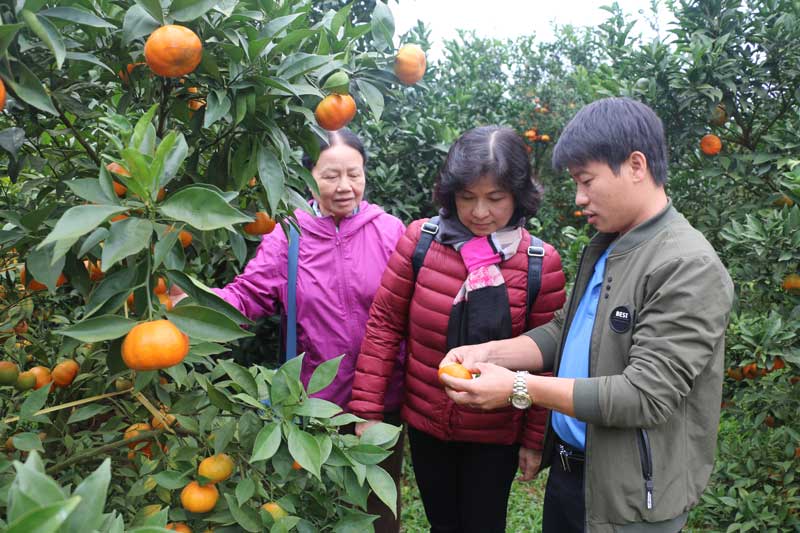
(HBO) – Taking selfies besides fruit-laden orange trees, harvesting red and succulent Canh and yellow-flesh oranges, and enjoying sweet and juicy fruits are alluring experiences that tourists can have when visiting orange orchards in Cao Phong district from November every year.
Ripe oranges cover the two sides of the road from Hoa Binh
city to Cao Phong with bright yellow. Endless orange gardens can be seen right
in the centre of the district. Roads to this orange farming area has been
upgraded and expanded, thus facilitating transport and tourism activities.
The owner of the Thuy Nga orange orchard in Area 4 of Cao
Phong town, Cao Phong district, instructs visitors how to choose high-quality
fruits.
Many cars have come to this
area on recent days, bringing tourists to seemingly limitless orange farms on
gently sloping hills.
Fruit-laden orange trees are the first thing to
see when arriving at the Thuy Nga orchard in Area 4 of Cao Phong town. Nearly 10
sets of tables and chairs were placed in the yard so that visitors can rest,
enjoy tea and taste local oranges.
Visitors to the farm vary. Some delegations
whose business trips traversing Hoa Binh came to the garden to buy oranges.
Many groups of elderly also dropped by to have a tour of this place.
Over the last couple of years, some travel
companies have added orange farms to tours of Hoa Binh province aside from
familiar destinations like Giang Mo and Lac villages and Hoa Binh Lake.
With an increasingly vibrant and widespread emulation movement aimed at building cultured residential areas and cultured families, Yen Thuy District has been making steady progress toward improving both the material and spiritual well-being of its people, while fostering a civilized, prosperous, beautiful, and progressive community.
Once lacking recreational spaces and community facilities, Residential Group 2 in Quynh Lam Ward (Hoa Binh City) has recently received attention for the construction of a new, spacious, and fully equipped cultural house. The project followed the model of state support combined with public contributions in both labor and funding.
The "All people unite to build cultural life" movement, which has been effectively integrated with Kim Boi district’s socio-economic development goals, is fostering a lively spirit of emulation across local residential areas, hamlets, villages, public agencies, and enterprises. In addition, through the initiative, traditional cultural values are being preserved and promoted, while community solidarity and mutual support in poverty reduction and economic development are being strengthened.
A working delegation of the Hoa Binh provincial People’s Committee led by its Permanent Vice Chairman Nguyen Van Toan on June 11 inspected the progress of a project to build the Mo Muong Cultural Heritage Conservation Space linked to tourism services in Hop Phong commune, Cao Phong district.
Born and growing in the heroic land of Muong Dong, Dinh Thi Kieu Dung, a resident in Bo town of Kim Boi district, in her childhood was nurtured by the sweet lullabies of her grandmother and mother. These melodies deeply imprinted on her soul, becoming an inseparable part of her love for her ethnic group's culture. For over 20 years, this love for her hometown has driven Dung to research, collect, and pass down the cultural values of the Muong people to future generations.
In the final days of May, the Ethnic Art Troupe of Hoa Binh Province organized performances to serve the people in remote, mountainous, and particularly disadvantaged areas within the province. These were not just ordinary artistic shows, but they were the meaningful journeys aimed at spreading cultural values, enhancing the spiritual life of the people and contributing to the preservation of ethnic minority cultural identities.



